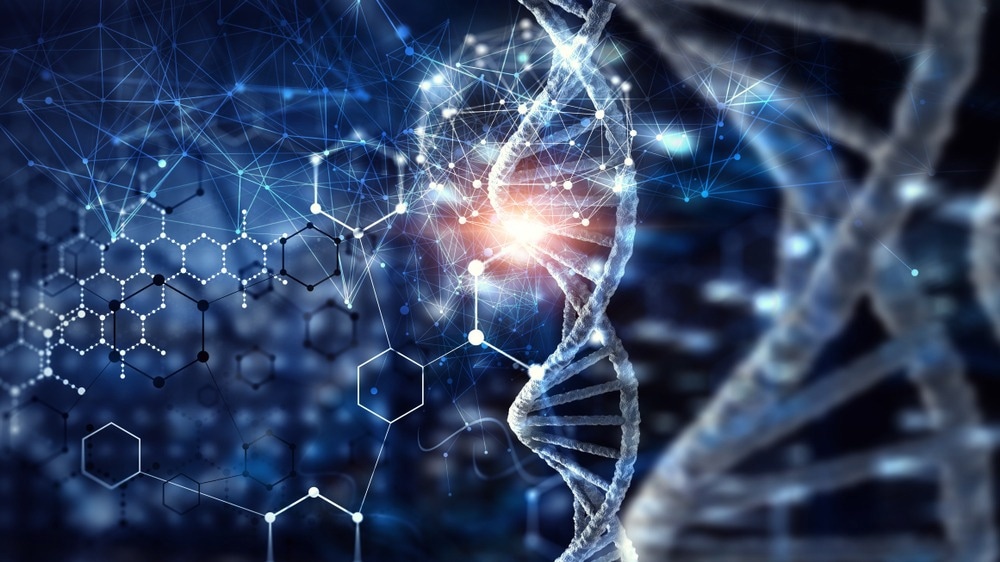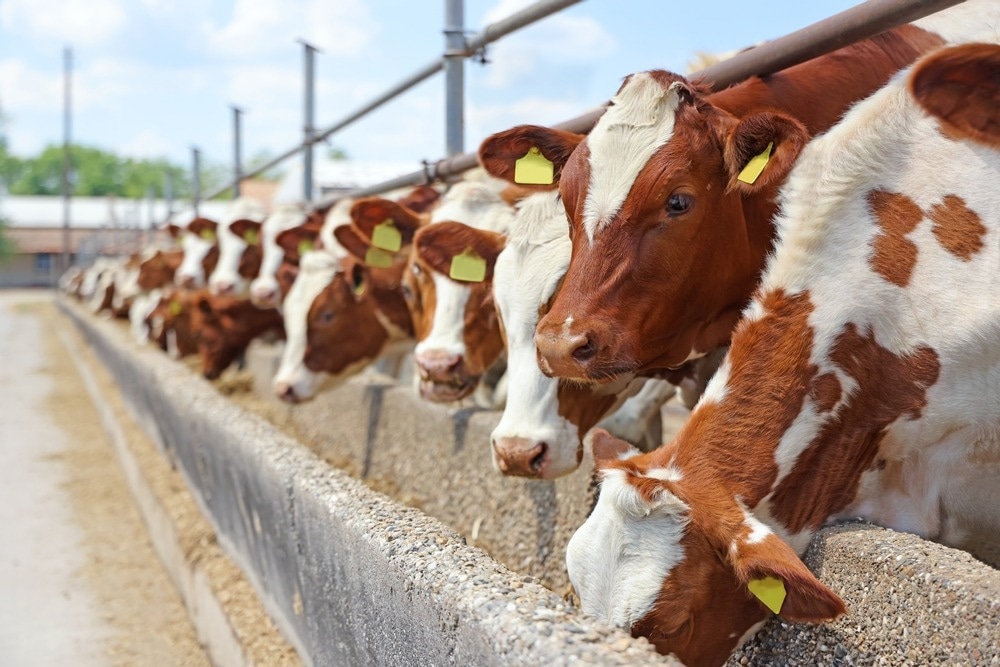Biotechnology, a life science discipline, is a promising frontier technology of the 21st century and beyond. In recent years, scientific breakthroughs have been based on the knowledge of living systems, which has laid the foundation for a continuous stream of new applications. Although cures and preventive measures for several diseases have been developed, suitable treatments for more than half of the world's diseases are still unavailable.

Image Credit: Sergey Nivens/Shutterstock.com
Biotechnology has also improved the agro-food industry. Hence, biotech companies are emerging rapidly, with France being the country with the largest number of biotech companies, followed by Spain.
The extent of biological evolution varied among different forms of life, such as microorganisms and highly developed animals and plants. The development and use of science and technology are also a part of human cultural evolution. Modern biotechnology, which includes gene technology, is still in its infancy and promises many ground-breaking innovations. These technological advancements offer bountiful possibilities for the twenty-first century.
Contribution of Life Science to Disease Management and the Agro-industry
Life science research has enabled the successful management of different diseases. For instance, biotechnology has led to a paradigm shift in disease management concerning preventive and personalized medicine based on diagnosis, targeted screening, genetic predisposition, and innovative drug treatments. Similarly, pharmacogenomics, which utilizes human genomic data to design new drugs, has helped bring about a radical change in medicine.
Xenotransplantation and stem cell research have enabled tissue and organ replacement to treat degenerative diseases, such as Alzheimer's and Parkinson's, and injuries resulting from burns.
Biotechnology applications have led to significant improvements in food quality. Agronomically improved crops, which are beneficial to the environment, have been produced. Cultivation of genetically modified (GM) crops has substantially improved in all countries worldwide since the late nineties. A significant decrease in pesticide use has been recorded in genetically modified crops.
Food and feed quality have been associated with a reduction in health risks and incidence of diseases. Functional food with increased nutritional levels has consistently gained more importance and is expected to become a part of the lifestyle.
Plant genomic analysis has helped improve the traditional European cereal crop called spelt. Genetic engineering has enhanced the protein yield of spelt by 18%; therefore, it is used as an alternative protein source for animal feed.

Image Credit: Katrinshine/Shutterstock.com
How has Life Science Research Aided Technological Improvements in the 21st Century?
Gene technology has significantly contributed to developing effective treatments for both infectious (e.g., Acquired immunodeficiency syndrome-AIDS and malaria) and genetic diseases, such as cystic fibrosis, diabetes, and hemophilia. More life science-based research to help further the current understanding of molecular mechanisms associated with disease manifestation will assist in developing innovative treatments. For instance, anti-HIV drugs are available in the market only due to the knowledge of the causal agent acquired from molecular biology research.
The increased use of antibiotics has led to its resistance, i.e., more pathogens have become immune to many antibiotics. For instance, particularly in western countries, more tuberculosis (TB) cases have been reported, which might indicate drug resistance. If this disease is neglected, it could be fatal. Pharmaceutical research has been engaged in a race against pathogens. Molecular details of the pathogens and their interaction with the host have helped develop effective drugs to counter many diseases.
21st Century Products Based on Life Science and Technological Advancements
Biotechnology has numerous applications, especially in medicine. Additionally, it has helped produce enzymes that accelerate chemical reactions (catalysts) and clean environmental pollutants. The overall revenue of the European and US biotechnology industries has approximately doubled over the five-year period from 1996 through 2000.
The rapid growth of the biotechnology-based industries continued into the 21st century, especially in the healthcare sector. Globally, these industries reached a valuation of $752.88 billion by 2020. Some of the products of the 21st century created through the combination of life science and technology are discussed below:
Medicine
A new trend toward personalized solutions and e-health strategies is being developed. Biotechnology has enabled safer, cost-effective, and ethical production of traditional and modern drugs. Additionally, it has supported other medical services, such as hemophilia treatment with unlimited sources of coagulation factors, human insulin, and vaccines against rabies and hepatitis B.
Biotechnology-based industries have expanded their research into developing monoclonal antibodies and pharmaceuticals to stop disease progression. Although monoclonal antibodies were produced in the last quarter of the 20th century, the availability of specific antibodies in large quantities was only made possible after the discovery of sensitive assays.
The discovery of molecular markers and uncovering of biological pathways for diseases through genomics and proteomics have played a vital role in advancing medicine in the 21st century.
Several biosensors have been developed based on biologically active components, the signal transmitter and the transducer (signal converter). These biosensors play an important role in disease diagnosis and monitoring.

Image Credit: SewCream/Shutterstock.com
Agriculture
It must be noted that the agricultural application of biotechnology raised the most controversy. In 1994, several European countries and the US developed agricultural genetically modified organisms (GMOs) (e.g., herbicide-resistant crops and crops that can produce their own pesticides).
Soon after, genetically modified tomatoes were produced, having longer shelf lives that received FDA approval. Although GMOs received approval from global regulatory bodies, a group of consumers remained skeptical regarding their long-term effects on health and ecology. In the 21st century, an increase in genetically modified crop (e.g., corn, cotton, and soybean) plantations has been observed in the US.
Gene technology has also been used in plant breeding. Around two dozen genetically modified plants have been approved and cultivated worldwide. This number is expected to rise rapidly in the coming years.
A high percentage of crop plants is lost to pests (e.g., bacteria, viruses, and fungi) and herbicides used to eliminate weeds. Genetically modified crops resistant to pests and herbicides have been developed, which has substantially increased crop yield. For example, genetically modified maize and potato are resistant to insects and several virus attacks. Additionally, gene technology increased the possibilities of crop farming, i.e., genetically modified crops could be cultivated in previously uncultivable areas due to high salt concentration or very dry or warm conditions.
According to the agro-food industry, all commercial crop seeds will be associated with gene technology in the next few decades. The seed by itself could be genetically modified, or genetic engineering techniques could be used in the breeding phase to select the best plant species.
Food and Beverages
In 1993 bovine somatotropin (BST) received approval from the FDA, a growth hormone that increases milk production in dairy cows.
Artificial reproduction techniques have been significantly used in cattle breeding farms. For a prolonged period, artificial insemination has become a routine technique in animal breeding. Transgenic animals developed for farms are based on two main characteristics: disease resistance and increased yields. Some transgenic animals have been developed such that they produce fewer fats. As per the current situation, it is less likely to produce transgenic animals that will reach our table because gene technology applications are inconsistent in some cases. However, there is a massive possibility that gene technology will be applied to maintain animal health by generating vaccines to prevent animal diseases, diagnostics, and drugs in the future.
In the last decade, many genetically produced enzymes, such as rennet enzyme chymosin, have been commercially used for food processing. Vitamins, additives, and aspartame have been commercially produced in GMOs.
Genetically modified bacteria produce cheese, kefir, and yogurt, ensuring greater shelf life. Nevertheless, these applications greatly depend on consumers' acceptance, and, currently, it cannot be foreseen how far genetically modified microorganisms will be used in food processing.

Image Credit: branislavpudar/Shutterstock.com
Environmental Solutions
Biotechnology alone or combined with other physical and chemical methods provides a solution for many environmental problems. This technology has been used for sewage or wastewater treatment and decontamination of land and soil. Recently, new functions have been set for environmental technology, such that it has focussed on developing waste-free or low-waste products. In addition, new methods are being developed for utilizing by-products and wastes as raw materials for producing new products.
Environmental technology also focuses on genetically optimized microorganisms for results that traditional methods cannot obtain. Typically, conventional treatment systems, such as biofilters, composting, or sewage plants, use naturally occurring microbial mixed culture to mineralize harmful substances. However, a lack of further technical development and limited knowledge of basic biological processes affects the efficacy of these processes.
In the future, gene technology might improve microbes' performance in complex systems. Based on experimental observations, recombinant organisms present in pure culture do not perform optimally in practical conditions, such as sewage plants or contaminated soil.
Biological Weapons
Gene technology has been used to develop biological warfare agents, such as anthrax agents. Like environmental technology, gene technology has failed to outperform naturally occurring organisms, which tend to produce more dangerous, aggressive, and infectious pathogens, such as severe acute respiratory syndrome coronavirus-2 (SARS-CoV-2).
Bioelectronics and Neuroinformatic
Bioelectronics is associated with the generation, analysis, transfer, and storage of signals in biological systems. This information is commonly used to develop biosensors and other bioelectronic components (e.g., biochips). Bioelectronics is a relatively new discipline of interdisciplinary science that applies principles of molecular biology, biochemistry, biotechnology, biophysics, microelectronics, and nanotechnology.
Neuroinformatics is another new discipline of science that combines neurobiology, microelectronics, biotechnology, and informatics. It conducts both theoretical and experimental research to elucidate the processing of the central nervous system. Both bioelectronics and neuroinformatics have exceptional scientific and technological innovation potential.
Sources
- Bhattacharya, S. (2020) Science and innovation in the 21st century: new paradigms and challenges for policy design. Current Science. 118, pp. 348-349.
- Bhatnagar, N. (2019) New Trends And Techniques Of 21st Century Education With Special Reference To Life Science: A Review. International Journal of Scientific & Technology Research, 8 (9).
- Elling, M. and Tinkoff, D. (2017) Innovating at the speed of the 21st century in pharmaceuticals. [Online] Available at: https://www.mckinsey.com/industries/life-sciences/our-insights/innovating-at-the-speed-of-the-21st-century-in-pharmaceuticals
- Novossiolova T. (2016). Twenty-first Century Governance Challenges in the Life Sciences. Governance of Biotechnology in Post-Soviet Russia, pp. 113–165. https://doi.org/10.1007/978-3-319-51004-0_4
- Marburger, J.H. (2011) Science, technology and innovation in a 21st century context. Policy Sciences, 44, 209. https://doi.org/10.1007/s11077-011-9137-3
- Mohammad, T.S. (2002) Science and Technology as the Inevitable Necessity of Man's Development in the 21st Century. The Anthropologist, 4(4),pp. 227-232, DOI: 10.1080/09720073.2002.11890747
- 21st Century Technologies Promises and Perils of a Dynamic Future. Organization of Economic Co-Operation and Development. (1998) Available at: https://www.oecd.org/futures/35391210.pdf
Last Updated: Jan 16, 2023